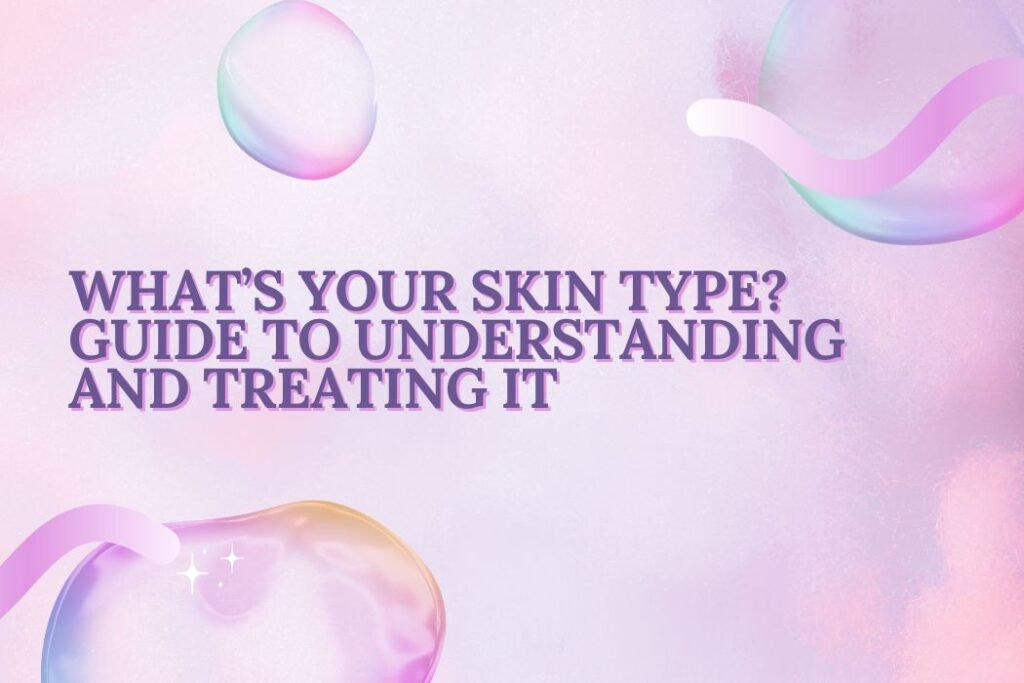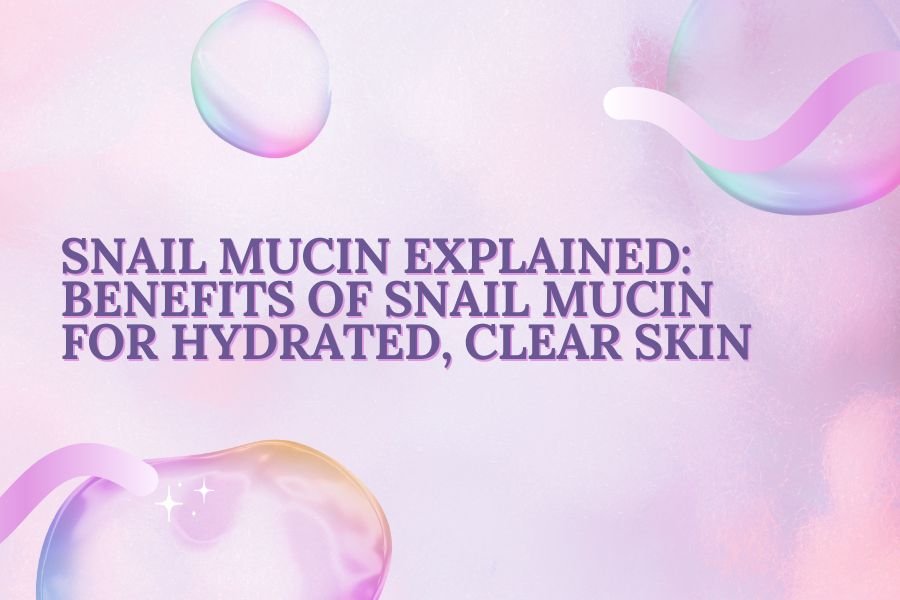If your skincare routine isn’t giving you the results you expected, it might be because you’re not using the right products for your skin type. Korean skincare is known for its thoughtful layering and gentle formulations but the key is matching those formulas with what your skin actually needs.
Choosing the right skincare starts with understanding your skin type. Without that, you risk using products that worsen your skin, causing breakouts, dryness, or irritation. At Miyoki, we offer Korean skincare that’s effective, gentle, and suited to real skin needs. But before you start building a routine, it helps to know what you’re working with.
Normal Skin
Stable, well-balanced skin with minimal concerns.
How It Looks and Feels
- Smooth texture with no dry or oily patches.
- Rarely experiences breakouts or irritation.
- Pores are small and not very visible.
- Skin tone appears even, with a natural glow.
What’s Happening Under the Surface
Normal skin has a well-functioning barrier. Oil (sebum) and moisture levels are balanced, which helps protect against environmental stress and supports natural healing.
Common Challenges
Even if your skin is generally low-maintenance, seasonal changes or product overuse can cause it to shift. Without proper hydration and sun protection, normal skin can still develop premature signs of ageing or damage.
Best Ingredients & Products
- Hyaluronic acid: For lightweight hydration.
- Ceramides: To keep the skin barrier intact.
- SPF 30 or higher: Daily protection against UV damage.
- Mild cleansers: To keep the skin clean without over-stripping.
Oily Skin
Shiny skin that produces excess oil, often leading to clogged pores.
How It Looks and Feels
- Skin looks shiny or greasy within a few hours of cleansing.
- Makeup may wear off easily or slide during the day.
- Enlarged pores, especially around the nose and forehead.
- Frequent blackheads, whiteheads, or acne.
What’s Happening Under the Surface
Sebaceous glands are overactive, producing more sebum than the skin needs. This can trap dead skin and bacteria in the pores, leading to breakouts and congestion.
Common Challenges
Stripping the skin with harsh cleansers can trigger more oil production, worsening the problem. The goal is to balance—not eliminate—oil.
Best Ingredients & Products
- Salicylic acid (BHA): Helps unclog pores and reduce inflammation.
- Niacinamide: Regulates oil production and soothes the skin.
- Clay or charcoal: Absorb excess oil without damaging the skin barrier.
- Light gel moisturisers: Hydrate without clogging.
Dry Skin
Lacks moisture or natural oils, often leading to discomfort or flakiness.
How It Looks and Feels
- Feels tight, rough, or itchy—especially after cleansing or in cold weather.
- Looks dull or flat, with visible flakes or dry patches.
- Fine lines appear more prominent, especially around the eyes or mouth.
- Can become red or sensitive in dry environments.
What’s Happening Under the Surface
Dry skin doesn’t produce enough oil (lipids) to retain moisture. The skin barrier becomes weak, allowing water to escape and irritants to enter.
Common Challenges
Dry skin can become easily irritated and develop microcracks. Without proper hydration and barrier support, it may show signs of ageing sooner.
Best Ingredients & Products
- Ceramides and fatty acids: Restore the lipid barrier.
- Shea butter, squalane, or sunflower seed oil: Rich moisturisers to seal in hydration.
- Snail mucin or panthenol: Calm and deeply hydrate.
- Sleeping masks: Lock in moisture overnight.
Combination Skin
Oily in some areas, dry or normal in others. The most common skin type.
How It Looks and Feels
- Oily T-zone (forehead, nose, chin) with drier cheeks or jawline.
- Breakouts may occur in oily areas while other parts feel tight or dehydrated.
- Makeup may look uneven—melting in some areas and clinging in others.
What’s Happening Under the Surface
Different parts of your face have different oil gland activity. External factors like weather, diet, and stress can increase imbalance.
Common Challenges
It’s hard to find “one-size-fits-all” products. Some ingredients can overdry one area while under-treating another.
Best Ingredients & Products
- Balancing cleansers: Gentle formulas that don’t overdry.
- Alcohol-free toners: Hydrate and prepare skin for treatment.
- Multi-masking: Use clay on oily zones and cream-based masks on dry areas.
- Layering light hydrating products: Hydrate everywhere, and spot-treat where needed.
Sensitive Skin
Easily irritated skin that reacts quickly to triggers.
How It Looks and Feels
- Frequent redness, itching, or burning—especially after applying products.
- Prone to reactions from fragrance, alcohol, or changes in climate.
- May feel hot, stingy, or inflamed even with gentle products.
- Can show visible capillaries or flushing.
What’s Happening Under the Surface
Sensitive skin often has a compromised barrier that doesn’t effectively block irritants. It’s also more reactive to heat, light, or chemicals.
Common Challenges
Even “natural” or “organic” products can trigger reactions if they contain essential oils or strong plant extracts. Simplicity and consistency are key.
Best Ingredients & Products
- Centella Asiatica: Calms redness and promotes healing.
- Panthenol, allantoin, and beta-glucan: Soften and reduce irritation.
- Fragrance-free, low pH cleansers: Help reduce skin stress.
- Barrier-repair creams with ceramides: Strengthen skin and reduce flare-ups.
How to Test Your Skin Type (At Home)
If you’re not sure what category you fall into, try this simple method:
Cleanse your face with a gentle cleanser.
Pat it dry, then apply no skincare at all.
Wait 30 minutes, then examine your skin:
Shiny all over = Oily skin
Tight, itchy, or flaky = Dry skin
Shiny in the T-zone, dry elsewhere = Combination skin
Even, calm, and comfortable = Normal skin
Red, burning, or irritated = Sensitive skin
Start Building Your Routine With Confidence
Understanding your skin type is step one. The next step is building a routine with products that support your skin and not fight against it.
Miyoki’s product range is chosen to suit real skin types with real concerns. From lightweight toners to calming serums and rich barrier creams, we stock only what we’d use ourselves.
Disclaimer: The content on this blog is for informational purposes only and is not intended as medical advice, diagnosis, or treatment. Always consult with a qualified healthcare professional before starting any new skincare routine or product. Individual results may vary. Miyoki is not responsible for any adverse reactions or outcomes resulting from the use of information or products discussed on this site.


